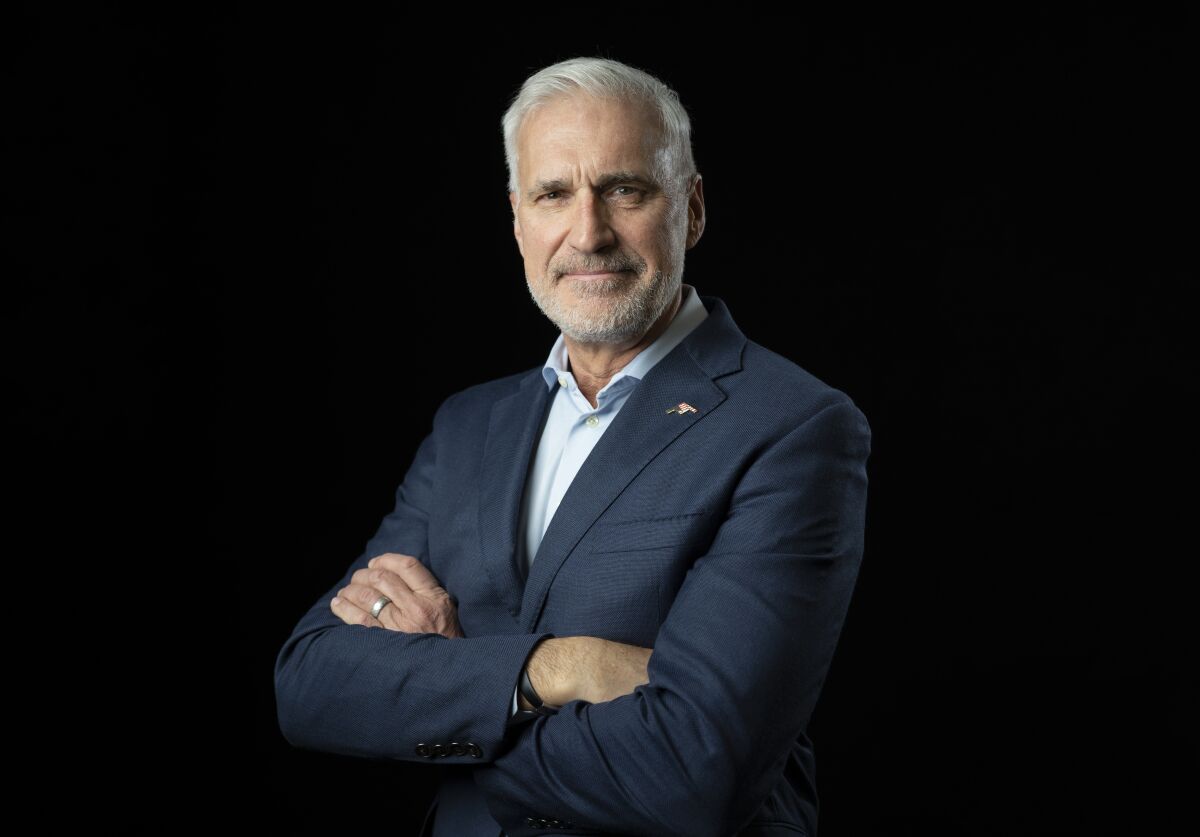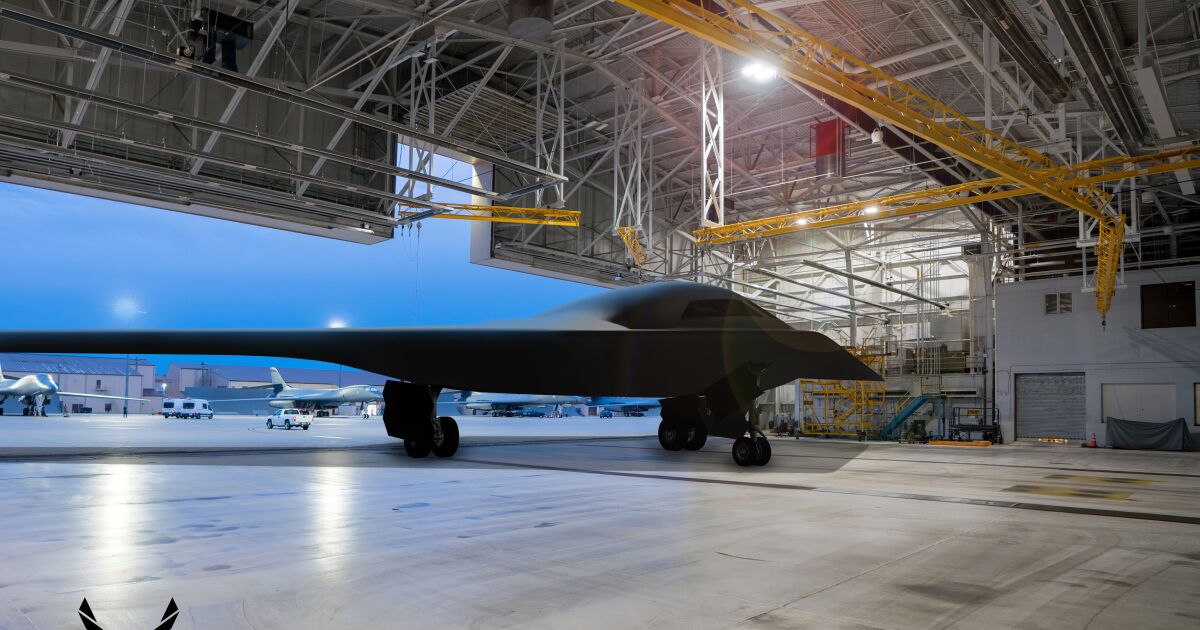After years of design work, competition and secrecy, the U.S. Air Force’s new B-21 bomber will finally be unveiled to the public.
The first of the stealthy, bat-winged jets will be revealed Friday at Northrop Grumman Corp.’s Palmdale facility, where at least 100 of the new bombers will be assembled. Employment at Northrop Grumman’s Antelope Valley sites has soared to more than 7,000 workers, double the population in 2015 when the company first won the bomber contract.
The assembly line represents a boost to Southern California’s flagging aerospace industry, which has declined from the heights reached during World War II, the space race and the Cold War. In recent years, Southern California’s aerospace resurgence has largely come from the commercial space sector, with the growth of Hawthorne-based SpaceX and various drone makers playing a large role.
But the region’s aircraft and defense contractor roots are still very much alive.
“The U.S. military is still choosing to build these very big, complicated bombers and other weapon platforms,” said Peter Westwick, a professor in USC’s history department and author of “Stealth: The Secret Contest to Invent Invisible Aircraft.” “As long as the U.S. military wants to build those, a lot of the expertise for that still resides in Southern California.”
Once seen as the region’s lifeblood, the aerospace industry accounted for just 2% of Los Angeles County’s total employment in 2019, according to a 2020 L.A. County Economic Development Corp. report. That year, more than 55,000 people were employed in aerospace and defense, a slight uptick compared with previous years.
In the Antelope Valley, where defense contractors have advertised open jobs on billboards, Northrop Grumman is the largest private employer. The B-21 is being assembled at Palmdale’s sprawling and secretive Air Force Plant 42, which is home to facilities for Lockheed Martin and Boeing, as well as NASA. About 16,000 people work there, said Thomas Lynch, communication and public information officer for the city of Palmdale.
There’s history at the plant. Northrop also built the B-2 stealth bomber there, and the company has leveraged that experience into the B-2’s successor, the B-21. A few hundred people who worked on the B-2, as well as B-2 pilots, have contributed knowledge to the B-21 and presented to co-workers about what that experience was like, said Doug Young, vice president and general manager of the company’s strike division in the aeronautics systems sector.
Young knows the B-2 well. He started working on the bomber for Northrop in 1985 and stayed with the program for 10 years.

Doug Young is vice president and general manager of Northrop Grumman’s strike division, which includes the B-21 program. He previously worked on the B-2 bomber for Northrop in 1985.
(Northrop Grumman)
A lot has changed since the B-2 first rolled out. For one, stealth technology has improved, the company says, although it’s understandably reluctant to offer details. The B-21 will also be more supportable and maintainable than its predecessor, a major point of emphasis for development given the high maintenance costs for the B-2.
The B-21 will also better adapt to and incorporate different payloads and capabilities, according to Northrop Grumman officials.
“Twenty years ago, if you bought a computer, it was a really challenging thing to integrate a printer or a modem,” Young said. “These days, you just bring stuff home, and it’s plug-and-play. Aircraft today are much more adaptable.”
The manufacturing site itself has also changed. Once used only for B-2 work, Northrop Grumman’s Palmdale facility now also produces the center fuselages for the F-35 fighter jet and the RQ-4 Global Hawk drone and its derivatives.
That variety is intended to keep and maintain the workforce, even after programs end.
“In the past, in the Antelope Valley, programs were episodic,” Young said. “They would happen, and they would go away.”
Although the program has relied on veteran aerospace workers and those from other manufacturing industries, a large portion of workers are in their first aerospace job or first job ever, said Tom Jones, Northrop Grumman Aeronautics System president.
“This is the beginning of a multi-decade franchise in the Antelope Valley,” he said. “The Northrop Grumman aeronautics workforce of the future is being created today through this program.”
Stay connected with us on social media platform for instant update click here to join our Twitter, & Facebook
We are now on Telegram. Click here to join our channel (@TechiUpdate) and stay updated with the latest Technology headlines.
For all the latest Automobiles News Click Here

